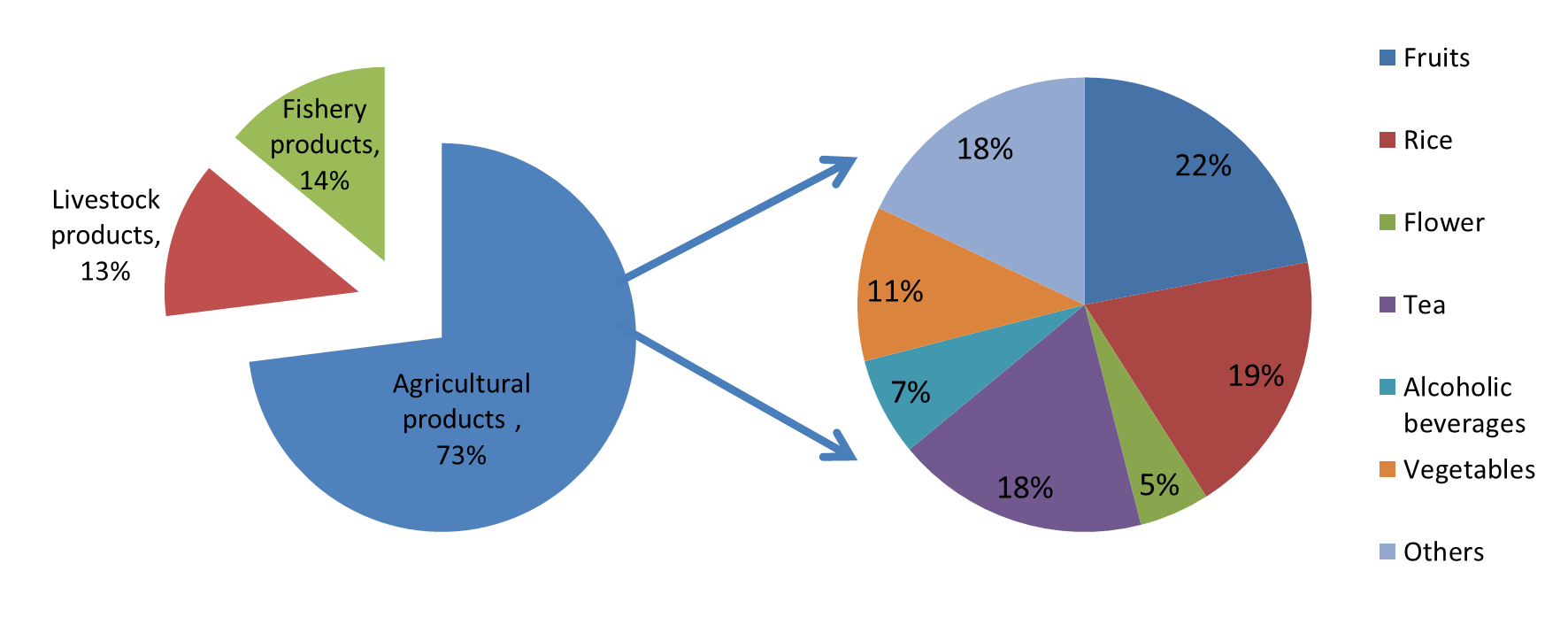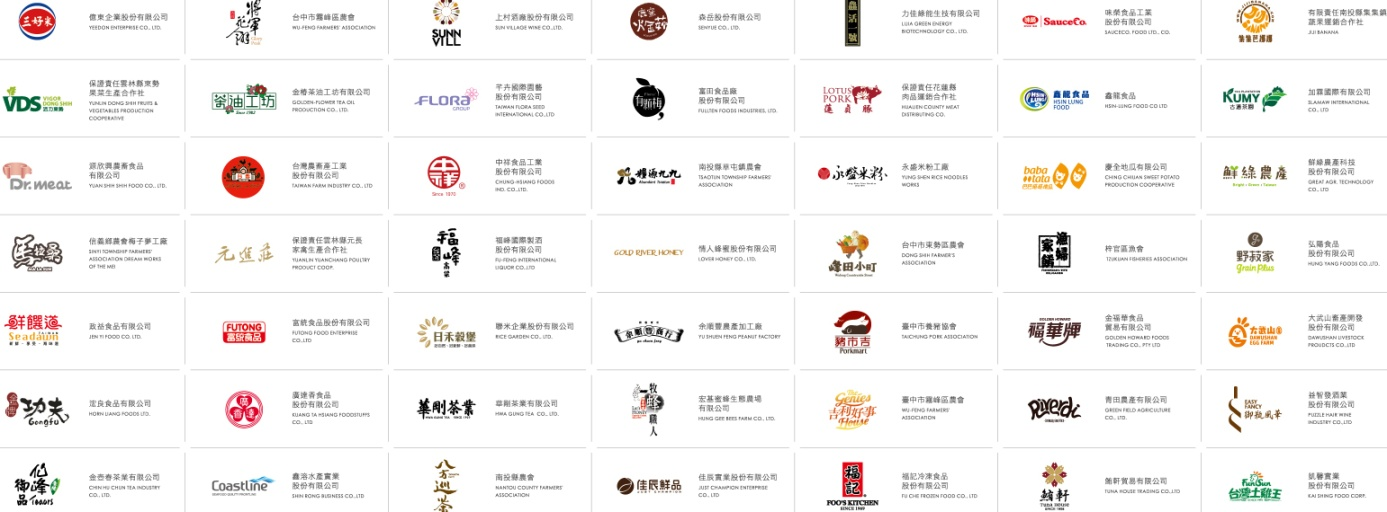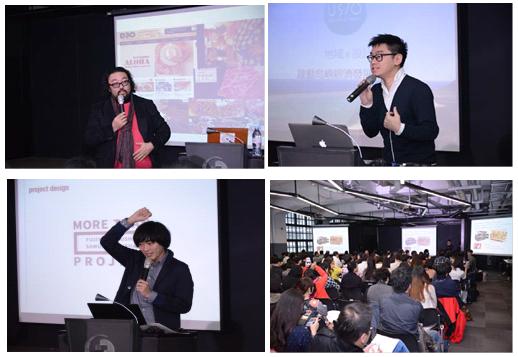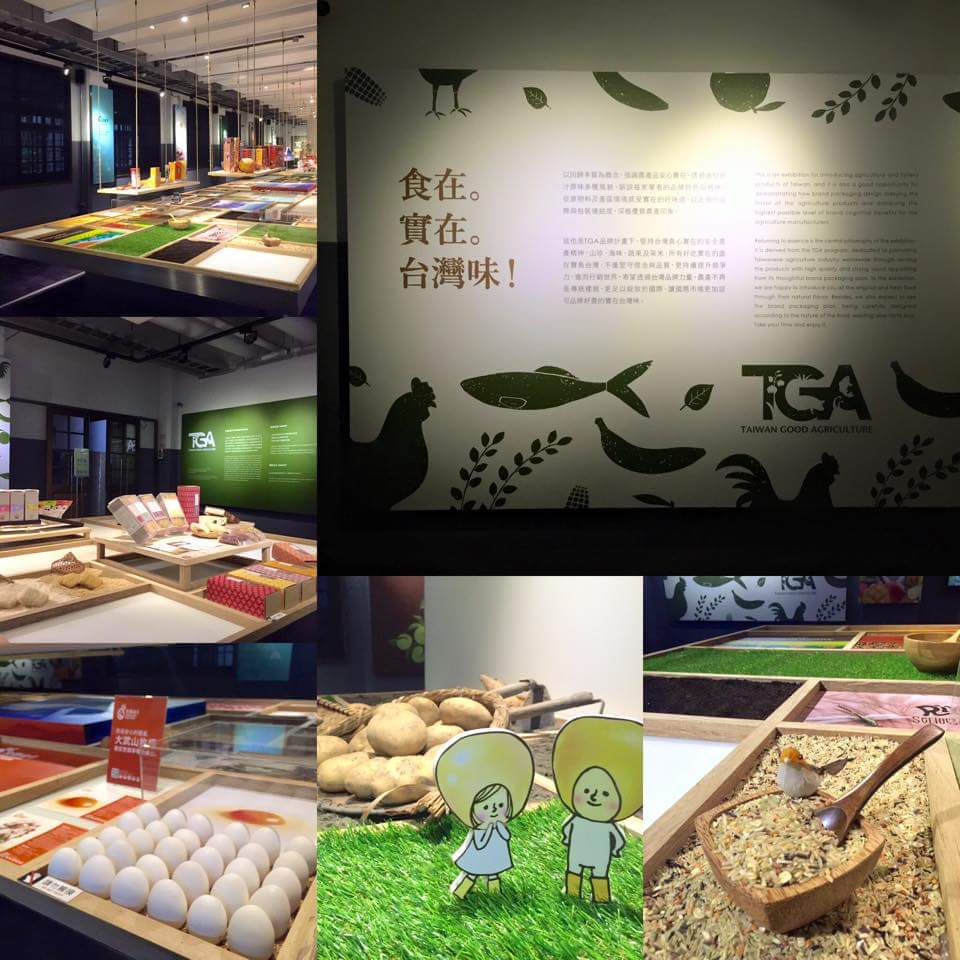Looking Back of a Decade of the TGA Agricultural Packaging - Branding Taiwan Products Project
2015.8 (Issue No. 278)
Taiwan has come face-to-face with challenges such as food safety, globalization, and regional economic integration in the last couple of years. In this time full of challenges yet filled with opportunities, Taiwanese agro-businesses must embrace innovation and change. They need to turn crises into breakthroughs and change the existing traditional thinking while advancing towards brand internationalization in order to find the formula for success amidst markets with fierce competitions.
For that purpose, the Council of Agriculture (COA) had entrusted the Taiwan External Trade Development Council (TAITRA) with the project named “Improvement of Product Brand Image and Packaging Design of Agricultural Export Products” since 2004, and later commissioned the help of one of the largest integrated design resource platforms in Taiwan – Taiwan Design Center (TDC) to oversee the entire project from 2010. The main function of the TDC is to serve as a crucial third-party communication platform between agro-businesses and brand design companies during the process of brand creation for agro-product exporters. The TDC helped establish the TGA (Taiwan Good Agriculture) brand identification image for the project, and set the “Agricultural Packaging - Branding Taiwan” slogan as core branding development value for all subsequent promotional events.
In this project, the COA aimed to assist agro-exporters to find a clear business direction and product positioning in the process of creating their own brand through innovative ideas of Taiwanese design experts, scholars, and teams. Moreover, the COA also helped them plan their international marketing strategy and product packaging design, which would optimize and upgrade their product image towards internationalization. The project has expanded significantly in 3 aspects since its implementation, namely design, management, and marketing. Currently, the project structure is composed of 3 major strategies, which more detailed explanations are as follows:
I. Develop private brand and improve packaging design for export
1. This strategy is the core of the project, which is to assist exporters clarify their companies’ development direction and product positioning through expert assessment first, and then move on to let professional design teams customize a private brand for them. The eligible participants of the project are mainly agro-businesses and farmers’ organizations (hereinafter referred to as agro-exporters) dedicated to the export of agricultural products. When the project initiated in 2004, the COA’s subsidies were mainly used for helping agro-exporters establish private brand as well as improve product packaging design. In order to achieve a broader and deeper extent in brand counseling and to utilize government funds more effectively for the project, the COA has gradually raised the threshold of exporter matching funds. Currently the maximum amount of subsidy provided by the COA is NT$400,000 per exporter. The agro-exporters must provide more than half of the aforementioned amount on their account as a matching fund.
2. Every year at the conclusion of the project, the COA organizes achievement evaluation and presentation and publishes booklets in order to showcase participating exporters’ branding achievements. The goal is to share the process of a brand’s creation through innovative design concepts and its meaning with consumers and media, so that the brand energy of the exporters may reach farther.
3. As of 2014, The COA has already offered counseling to a total of 115 exporters, 26 of which are farmers’ organizations, including Tzi-guan District Fishermen’s Association, Tsao-tun Farmers’ Association, Wu-feng District Farmers’ Association, and Dong-shih Fruits and Vegetables Production Cooperative in Yunlin County, among others. The objective is to help domestic agricultural organizations gain a strong foothold in domestic markets first, and then advance towards international markets. Crop products make up for 73% of the total export, while fishery and livestock occupy 14% and 13% respectively. In turn, fruits and processed products (22% of the crop products), rice and processed products (19%), and tea (18%) are the major items that make for most of the exported crop products. According to analysis, Taiwan’s fishery products are mainly exported to B2B markets. Even though most buyers are foreign distributors, owning a private brand is still a very effective bargaining chip in price negotiation. Restricted by quarantine issues, livestock product export to foreign markets is rather limited. However, branding is still indispensable for gaining a strong foothold in existing foreign markets. The following are some of the most outstanding cases involving agro-exporters and organizations that the COA has counseled regarding branding over the years. Besides a brief account of their brand story and design concept, these cases illustrate the benefits and positive results that followed the establishment of their brands.
(1) Wu-feng District Farmers’ Association (Participation in 2010 and 2013): Due to different product properties, the Association applied for the establishment of two separate brands “Glory Peak” (Alcoholic Beverages) and “Wufeng Countryside Street”(Natural Series). The “Glory Peak” Series is associated with one of the most important and most influential political families in Taiwan for the past 100 years: Wufeng’s Lin Family. The cultural importance of the Lin Family is blended into product packaging in order to construct the best of Taiwanese agro-products and let consumers fully feel the beauty between the union of Taiwanese culture and product. As for the ”Wufeng Countryside Street”, the concept behind its design originated from the consumers’ positive trust placed in the excellent quality of the products by the consumers. Thanks to the long-term counseling the producers have received from the COA. Therefore, under the frame of that trust the designers decided to apply the hand-drawing technique to the design. They personified little insects in a cute but graceful way, and created a laid-back, tender, lovely, and beautiful fairytale new world full of imagination. This concept goes beyond race and borders to resonate with the inner tenderness, happiness, and sweetness in the brand’s main target consumers: women and children. Since the brands’ establishment, a total of 13 new distribution channels including on-line shops, physical shops, and retail beverage alcohol dealers have signed up. Moreover, the products under these two brands are now exporting to countries, such as China and Singapore. Currently an annual sales growth rate is maintained at 20%.
(2) Shin Rong Seafood Co., Ltd. (Participation in 2011): The flathead grey mullet requires great amount of cultivation technique and time to pinpoint its sex change period. Moreover, it takes a three-year period to be able to harvest mullet roes for processing. However, most gutted mullets are discarded or sold cheaply after the roes were harvested. Shin Rong Seafood wished to maximize the mullet’s edibility value and help mullet farmers maximize their profit. The company then proceeded to develop diverse product lines by from high-protein gutted mullets and thus, the “Coastline” brand was conceived. Among their best-selling products are the “3-in-1 Mullet Gift Set” series, comprising mullet roe, mullet XO Sauce, and mullet floss. No part of the fish is wasted and the profits of the farmers are greatly increased. Moreover, now the consumers can enjoy more selections from so many mullet product lines. These products have garnered several accolades such as the Fishery Product Award, Souvenir Award, and even the prestigious German IF Packaging Design Award in 2013, which led to an increase in domestic and abroad sales as well as a stable client source. Currently the company is targeting the Chinese and Japanese markets. It enjoys a stable growth of orders and expects its annual sales to increase by 30%.
(3) Lijia Green Energy Biotechnology Co., Ltd. (Participation in 2012): The company’s product brand ”Freshness No. 1” is true to its name. The design concept utilizes the product’s characteristic description and wishes to transmit the direct message of freshness in order to better catch the consumers’ attention and increase brand recognition. The visual pattern of the brand was taken from early bamboo fish basket with the idea of conveying recently caught freshness of the fish. The strategy is to become the leading brand in live-frozen grouper in Taiwan by resonating with consumers and obtaining a closer approach to real life. Currently the brand can be seen in major department stores in Taiwan. In 2014, the brand “Freshness No. 1” has officially entered the Chinese market through every large supermarket chains in Shanghai, and has been enjoying a steady increase in sales numbers.
(4) Ching Chiuan Sweet Potato Company (Ching Chiuan Sweet Potato Production Cooperative, Participation in 2013): In order to differentiate itself from the consumers’ stereotypical image of ordinary sweet potatoes, the designers intentionally transformed the nutritious attributes of sweet potatoes into a personified character as consumers’ energetic best friend. The design is composed of interesting imageries with the intension of creating a brand character full of energy and vitality. The name, however, was coined from the plant’s binomial name Batatas mixed with the cry of amazement when tasting delicious food, and thus “BABATATA” was born. The brand wishes to attract a new generation of consumers who love sweets but also like to eat healthy. Currently the company exports mainly to Hong Kong and Singapore. The sales numbers are steady and the products are sold directly to hypermarkets under the brand “BABATATA”. According to the company, brand sales have increased 20% to 30%.
(5) Slamaw International Trade Co., Ltd (Kumy Tea Garden, Participation in 2014): Kumy Tea Garden is located 2100 meters above sea level, close to the Lishan Black Forest National Wind-breaks Forest (A.K.A. Atayal Tribe Historic Trail). It is run by generations of an aboriginal family which dedicated itself to the protection of the primitive Black Forest and its ecosystem while cultivating the most excellent Lishan tea. The company wished to tell the stories of this natural ecosystem through the integrated image and packaging. The design reflects the colors of the last surviving mystic forest, wildlife, and the Atayal Tribe. This company began to export to China since 2012 and to the U.S.A. in 2014. Their strategy is to enhance brand recognition by participating in international trade shows in China. Currently, their target annual sales growth rate is 20%.
II. Increase brand management capability
1. In order to assist exporters which have already established brands or wish to develop a private brand, in increasing their branding management capabilities so that sustainable brand management may be achieved, the concept of brand management must first be deepened. Moreover, the integral competitiveness must also be raised by implementing the following strategies: the sharing of actual working strategies in successful cases, the understanding of brand export and crucial strategies in management, the determination and experiences for encouraging exporters to invest in branding. Other activities include organizing the “Management of Innovative Branding Seminar” and the “Visit to Successful Participating Enterprises” activity.
2. For the “Management of Innovative Branding Seminar”, the COA has invited interdisciplinary companies that were successful brand managers as well as brand consultants and experts to share their views and experiences about the challenges during different stages of branding management. The participants are expected to absorb branding information quickly and gradually accumulate experiences. In 2013, the Wowprime Group was invited to share “The good taste of a great dialogue with consumers”, and JingShengYu’s Taiwanese Tea House shared “Experience the sweet taste of brand in a new era” with participants to enhance their brand management concept and innovative thinking.
3. For the “Visit to Successful Participating Enterprises” activity, the COA organized visits to exporters which have received counseling from COA over the years. Through close interaction, the goal is to let participants have a deeper understanding of the brand creation process as well as learn how to transform the subsequent challenges and changes that come with brand marketing into positive energies for brand management. In 2014, the participants visited Wei Jung Food Industry Co,. Ltd. and Ching Chiuan Sweet Potato Company.
III. Product testing and market development
1. In order to let participating exporters understand how markets react to brand design and product packaging, the COA have organized the “International Trade Show Participation” and the “International Distribution Channel Training Courses” for exporters. The goal is to make necessary adjustments to product positioning and packaging design as well as marketing strategies in order to increase competitiveness in international markets.
2. Exporters which receive counseling in the same year enjoy a prioritized entry into Taiwan Pavilion organized by the COA in the “Food Taipei”. The COA mainly assists exporters in conducting market testing and the presentation of their newly created brand image in the show.
3. The COA encourages exporters which have already established brands and have exported to other countries to participate in “International Distribution Channel Training Courses”. Through individual case assessment, seminars, and travel abroad for participating in international distribution channel testing workshops, the COA hopes through this way can assist exporters to understand their target market’s uniqueness, business model, distribution attributes, consumer orientation and habit, and then adjust product positioning, target consumer group, and marketing strategy as well as effectively increasing their products' export competitiveness. In 2014 the COA selected 10 exporters for individual assessment by taking Japan as the target market. 5 of these companies traveled to Japan for participating in workshops, where local market experts (including importers, dealers, and design experts) were invited as consultants to lead product testing using different methods, such as profound communication, market experience, distribution testing, and practical discussion.
12 years has passed since the project was first launched, and more than a hundred exporters have benefitted from it. Under the project, they all have gone through a metamorphosis and have gradually opened more doors to international markets with outstanding brand images. The COA hopes to see more exporters participate in this project and run their business with private brands. Every counseling case lasts only one year, but the goal of the project is to guide more companies onto the path of branding. The future of their development lies in their own hands and the process is hard, but the fruit that it bears is sweet. The COA wishes to encourage all those exporters that wish to set foot on the path of branding to never lose faith, for their perseverance will someday pay off. Last but not least, the COA wishes to salute all those exporters that have participated in this project. In addition to have paved the road for Taiwan’s agro-products to enter the world market, they have shown their determination in the pursuit of innovation. Thanks to them, Taiwan’s excellent and safe agro-products have gained positive recognition in international markets. The COA vows to work even more closely with agro-exporters and continue to enhance Taiwan’s outstanding brand image as well as to dedicate itself completely to increase Taiwanese agro-product’s global competitiveness and expand export markets.

Flow-chart of the “Export Agro-product Brand Counseling Project”

The analytic diagram of the different product categories from exporters which received counseling from COA’s TGA program from 2010 to 2014

This picture shows exporters (including agro-organizations) which have participated in the TGA Brand Counseling Project from 2010 to 2014, and their respective brands.

Successful TGA program cases over the years. (Picture A: 2011 participant Shin Rong Seafood Co., Ltd. and its product “One-bite Mullet Roe” which won the 2015 COA Top 10 Innovative Product Golden Award at the Food Taipei Show; picture B: 2014 participant Kumy Tea Garden blended typical Lishan elements into its product design which garnered praises from buyers according to the New Brand New Image test result obtained by the organizers; picture C: 2010 and 2013 participant Wu-feng District Farmers’ Association has successfully entered the Singaporean and Mainland Chinese markets with brand “Wufeng Countryside Street” which turned agro-products into cute and lovely gifts.)

Lectures on “International Distribution Channel Training Courses” – The organizers invited distributors or brand experts from target markets to come to Taiwan for experience sharing sessions and lectures.

Every year the TGA program organizes achievement presentations. The above pictures show the 2014 presentation which was held in conjunction with Creative Expo Taiwan at the Songshan Cultural Park. (Source: The TGA Agricultural Packaging – Branding Taiwan Project Facebook page)

Picture shows one of the workshops abroad in the International Distribution Channel Training Courses curriculum. The goal is to assist exporters increase brand managerial capability and plan subsequent marketing strategies through different methods, such as profound communication, market experience, distribution testing, and practical discussion.
